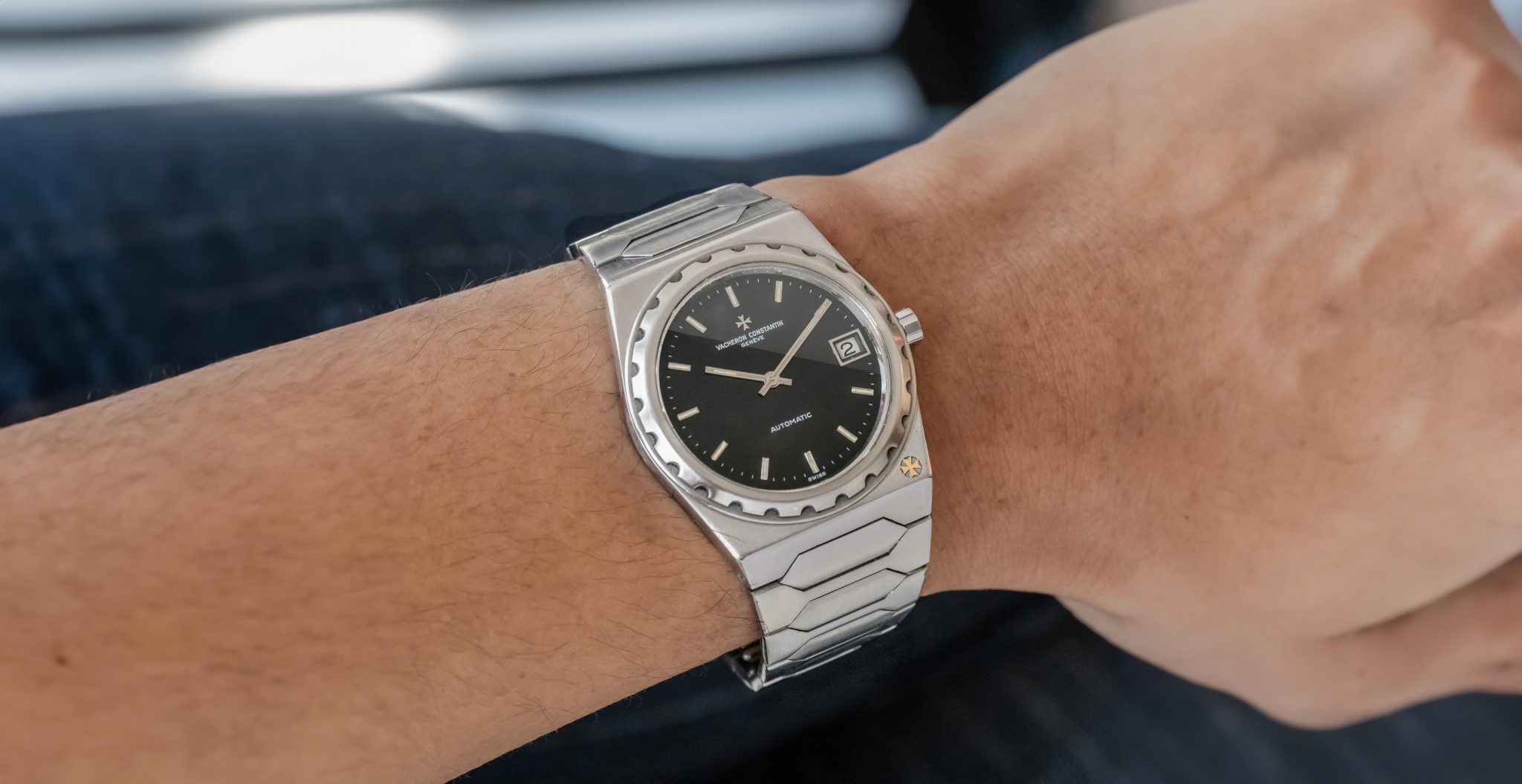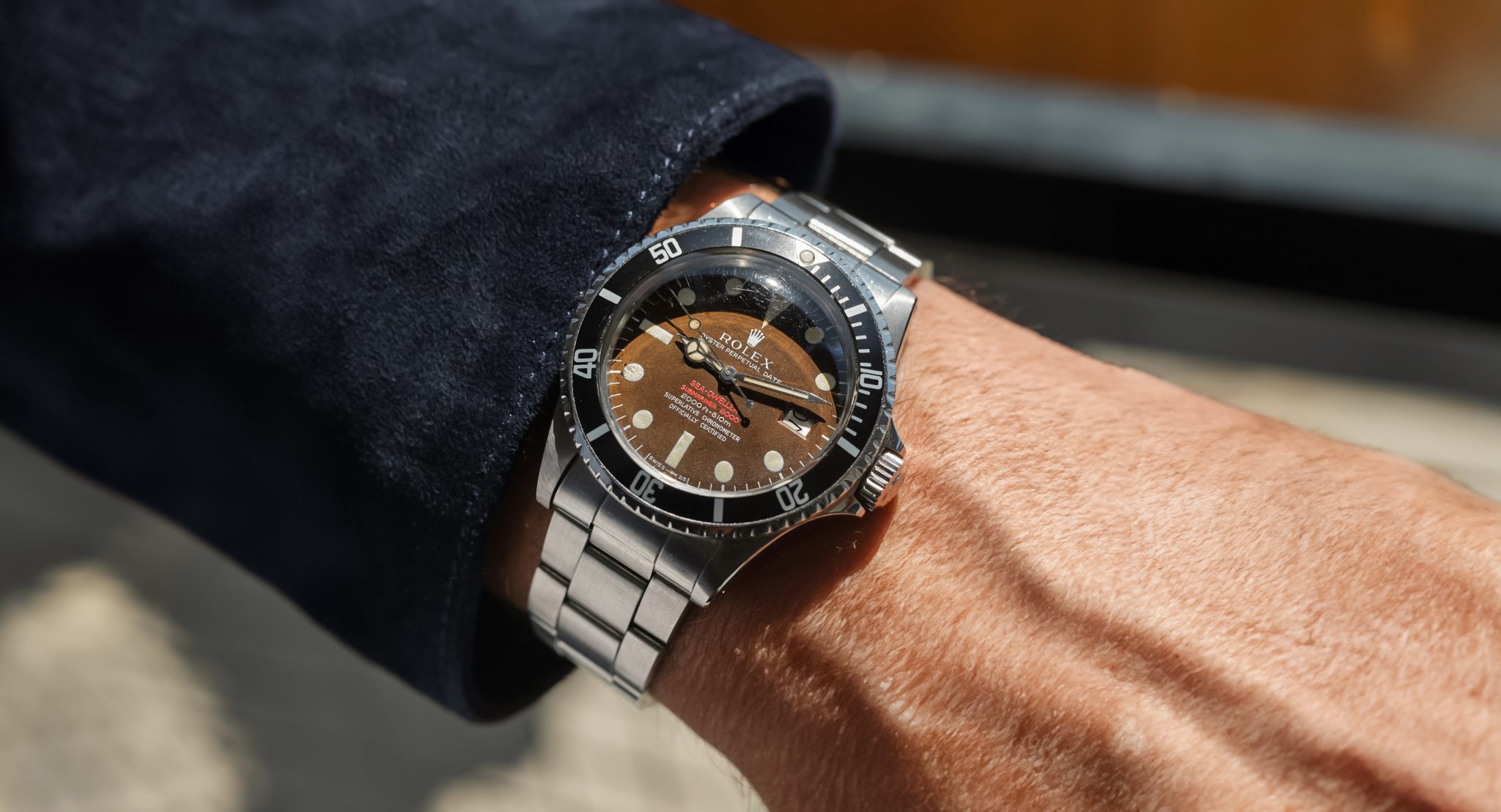
25686BA Audemars Piguet Royal Oak Quantième Perpétuel
Some watches command premiums for reasons I find quite tricky to describe. The number of digits in Daniel Roth’s new price list under LVMH, for example, seems to have been defined by a roulette wheel. This is a strategy, I assume, borrowed from Biver. But others command a premium because they deserve to. Roger Smiths are not cheap, but they shouldn’t be. If an 1815 Rattrapante chronograph takes more hours to create that your average house, the secondary market is not entirely unjustified. Even a great 2915 is every bit a 100K watch, as genesis of a very important narrative arc in horology and surprisingly rare, as long as, how should we say, it’s not one you find on Perezcope. And the early Royal Oak QP is genesis of a different narrative arc: the first time fine watchmaking met sporting pedigree.

This ref. 25686 is one of a special set of Royal Oaks, under 1600 examples of Royal Oak QP made before leap year indication and in essence the OG. Post quartz crisis, AP had two successful watches in the market. The first was the 5548 (and its descendants), the perpetual calendar developed in secret which was the sole watch that brought fine mechanical watchmaking back to supremacy. The second, Genta’s masterpiece, the 5402. In a demonstration of utter bravery, AP squeezed the 5548’s incredible ultra-thin perpetual calendar movement into a Royal Oak case. The development was no small expense. It would be sold for outrageous money at the time, even marketed later as ‘The most expensive steel watch in the world’. The price was about fourteen times what a steel Submariner went for back then, 45000 USD.
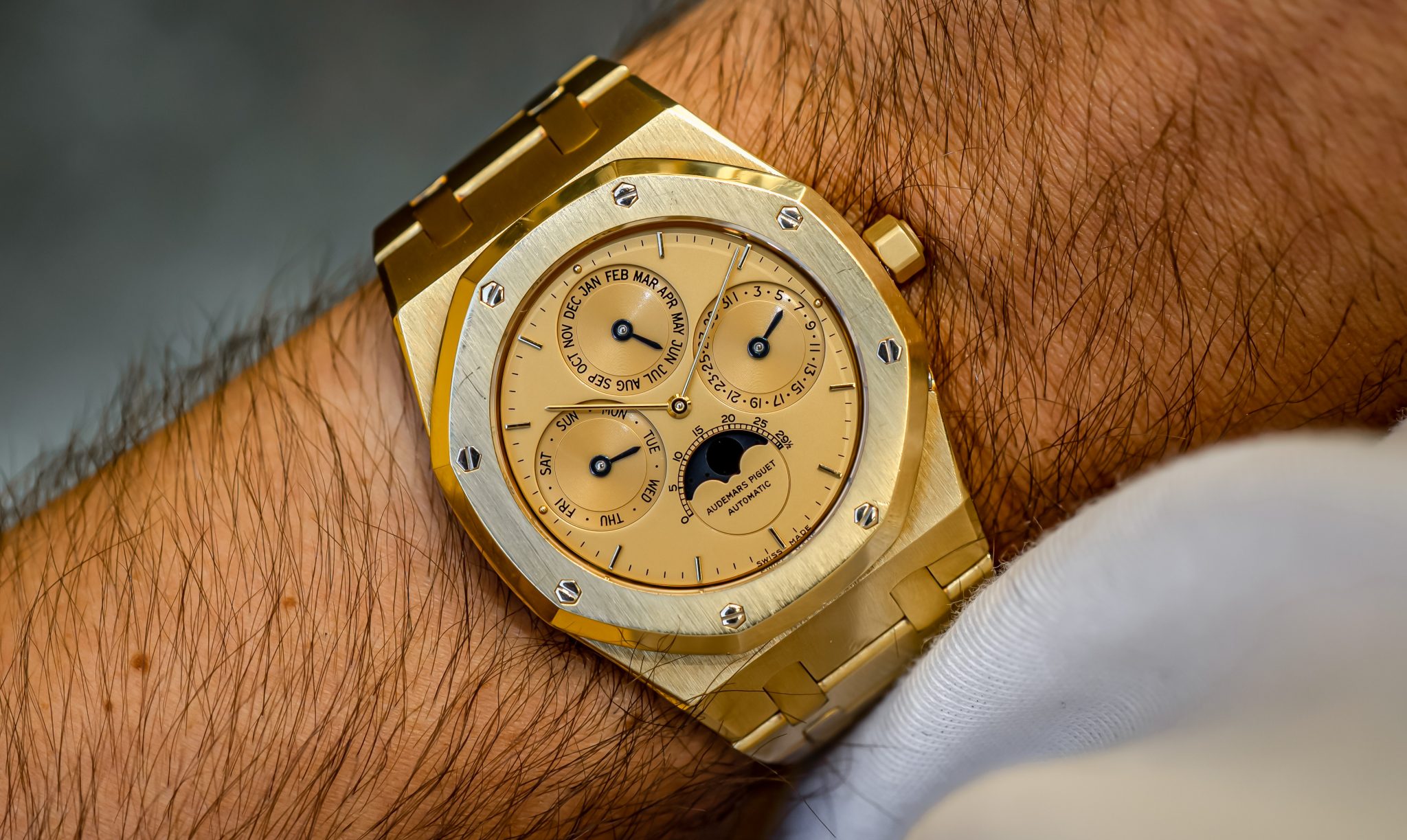
The 25686 is somewhere toward the chronological middle of the 10-ish pre-leap year references starting 1989 and introduced a display caseback to the party. This is one of 70 in yellow gold, alongside 85 in steel, 43 bimetal, 26 platinum, and 9 in pink gold. There are two dial types in all pre leap year indication. Mark 1 dials have a straight text for the ‘AUDEMARS PIGUET’ signature, where all letters are equally tall. Mark 2 signatures have a mixed caps font. Mark 1s are mostly early C-Series but a handful in D as well.
In 1999, a platinum example was 31K at Christies. In 2022, the same dial and metal sold at 460K USD at Phillips. Yellow gold is a small bit, and I stress small, more attainable, prices today are around 100K though they’ve been on the same trajectory. Can any watch be said to be objectively ‘worth’ 100K? Probably. Look, if a plastic complicated RM will regularly sell around a million, I’m okay with the watch that invented that philosophy, in precious metal no less, being 1/10th the ask.
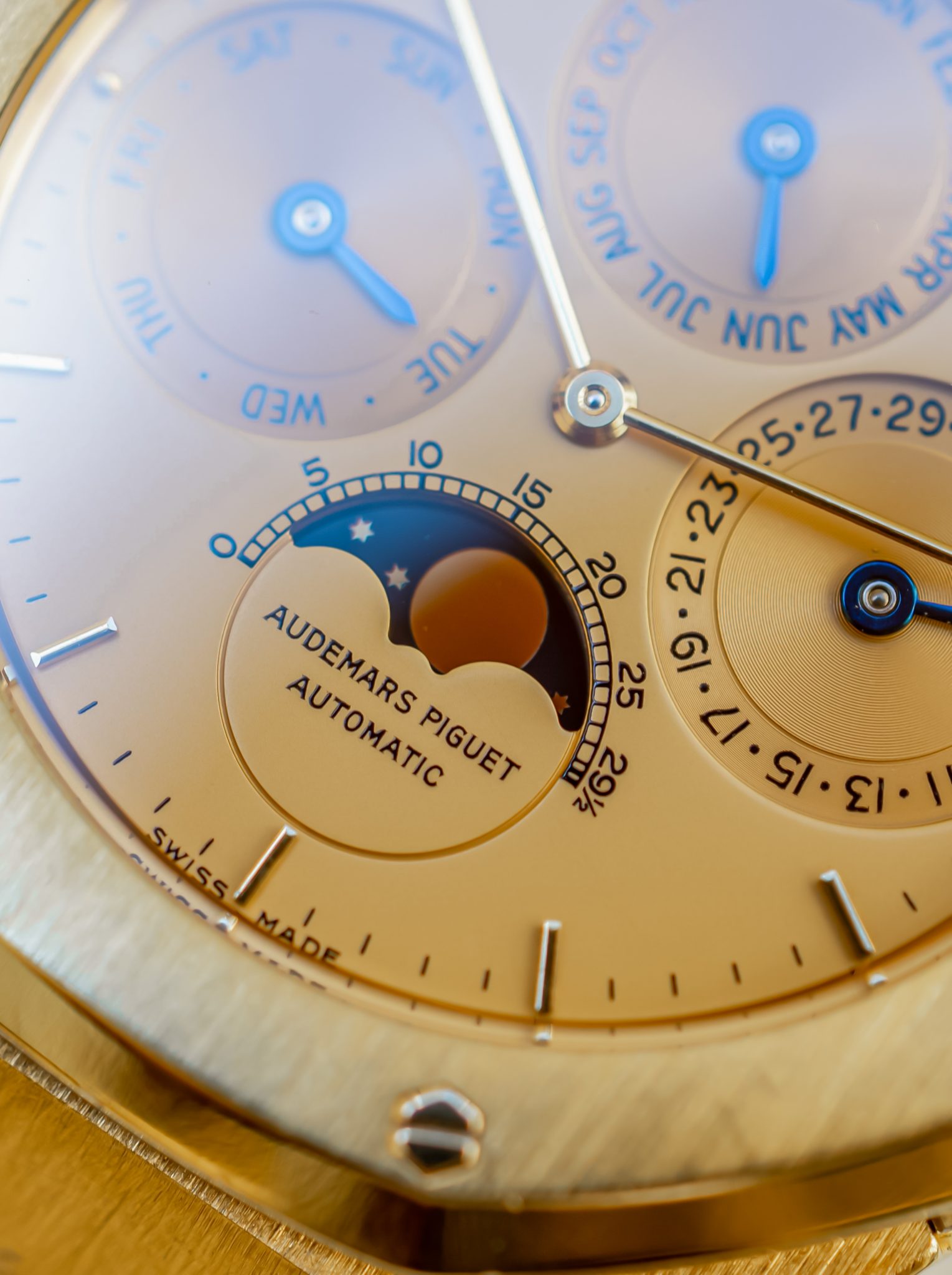
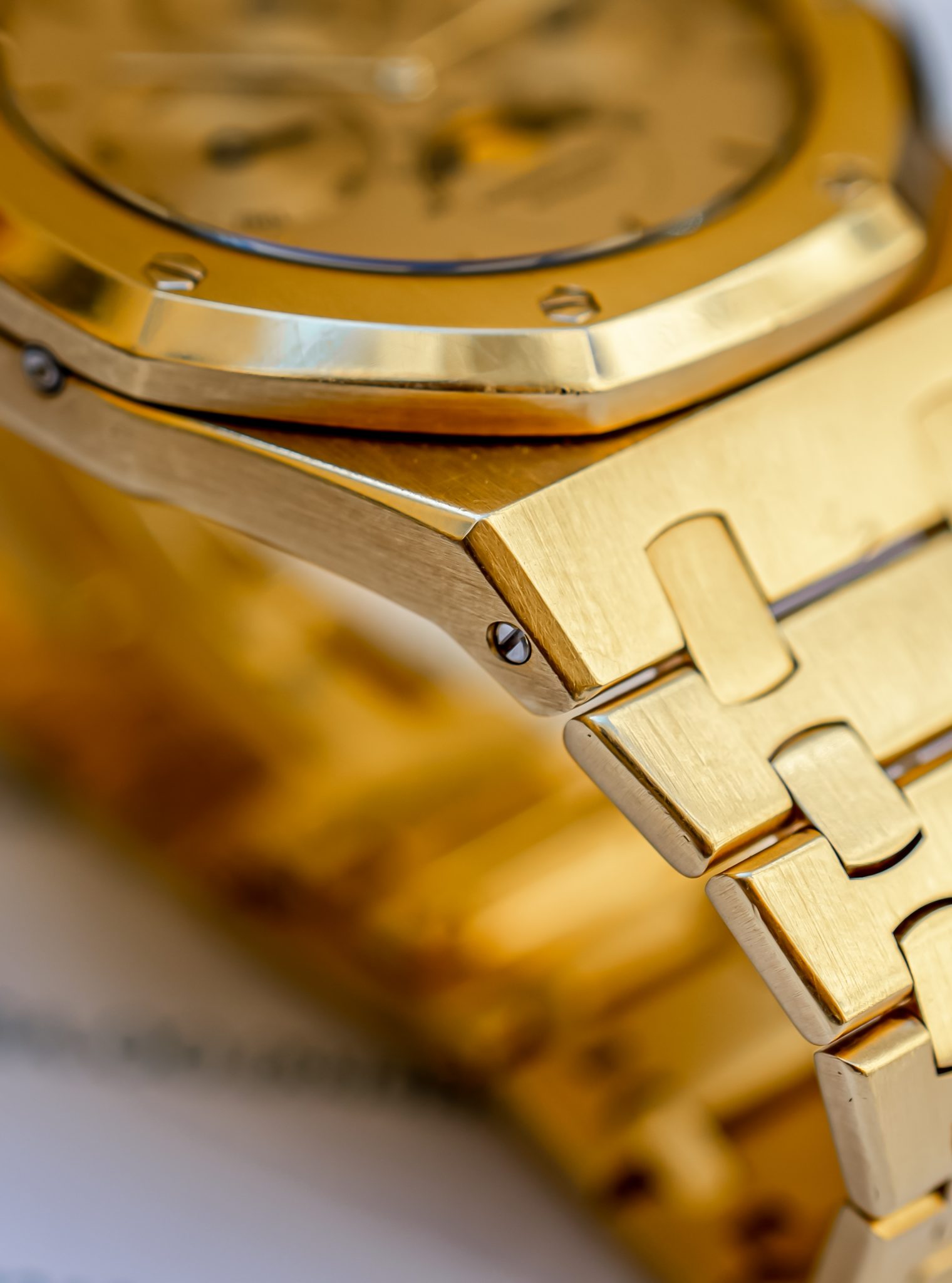
This example is in double gold, which is hard to argue with. The case has sharp edges and light surface wear basically everywhere, pretty much what we all want to see. Bevels are great. Its dial shows no visible damage, a Mark 1 with nothing out of place. The hallmarks are deep, its been serviced, and it comes with an Extract of Archive out of Sweden from a well-regarded retailer.







